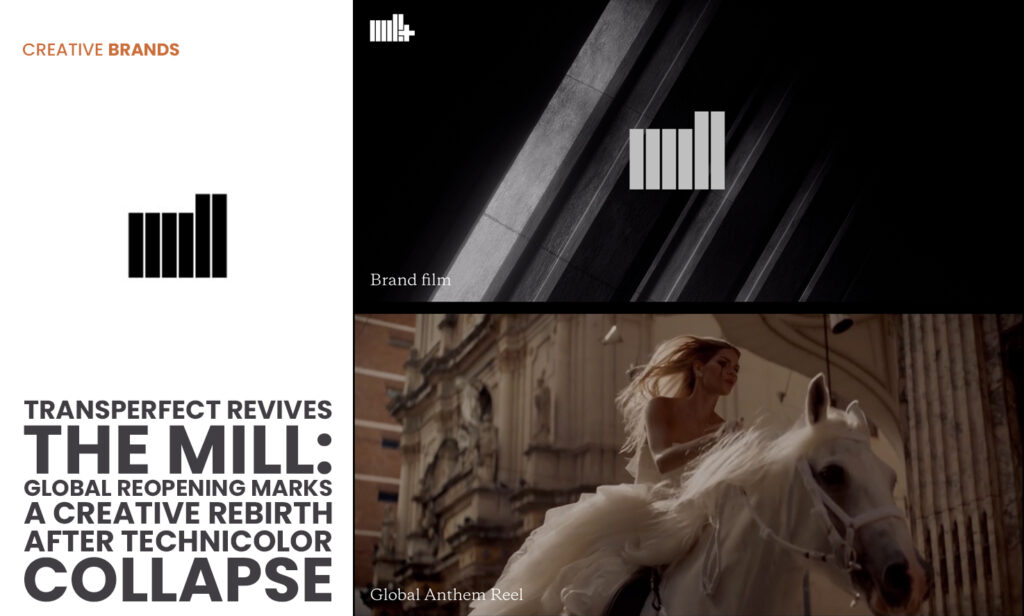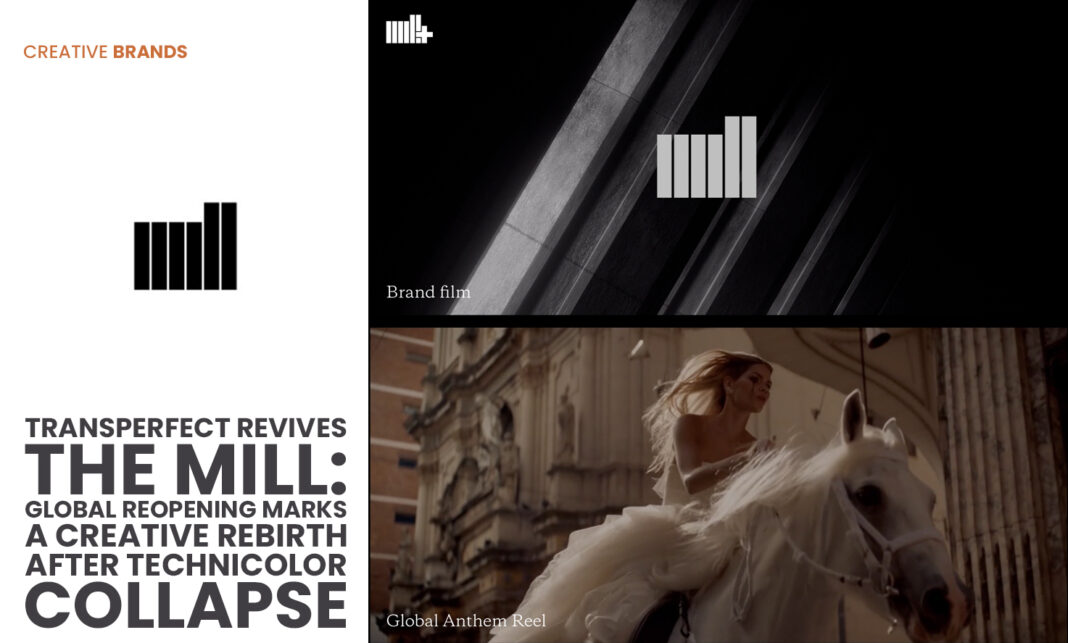
Global language and AI services firm TransPerfect has acquired The Mill’s French division and is reviving the legendary creative studio across London, Seoul, and Bangalore, with plans for U.S. expansion. The relaunch aims to restore The Mill’s global legacy while blending AI innovation with human creativity under a fresh leadership structure.
After months of uncertainty following the collapse of Technicolor Group earlier this year, one of the world’s most iconic creative studios, The Mill, is set for a major revival. TransPerfect, the global language and AI services leader, has acquired The Mill’s French division and announced the reopening of studios in London, Seoul, and Bangalore, marking the beginning of a new chapter for the renowned brand.
The move represents both a strategic expansion for TransPerfect and a symbolic restoration of a creative powerhouse that shaped decades of visual storytelling for global brands and blockbuster films. Founded in London in 1990, The Mill built a reputation for innovation and craftsmanship in advertising and entertainment — from Nike’s game-changing campaigns to cinematic projects like Gladiator and Harry Potter. Its sudden closure in February 2025, following Technicolor’s financial collapse, sent shockwaves through the creative world, reportedly affecting around 6,000 roles globally.
Now, TransPerfect’s intervention promises not just a rescue but a rebirth.
“We absolutely want to grow in the U.S. It’s one of our biggest focuses as a next step,” said Barnaby Wass, TransPerfect’s Chief Business Officer, highlighting the company’s ambition to restore The Mill’s global footprint. The U.S., once a major hub for The Mill’s operations, is next on the roadmap as TransPerfect rebuilds the brand with a careful, creative-first approach.
Strategic Reopenings Across Continents
The revived Mill London studio opens its doors with 15 staff members, led by Managing Director Liam Collinwood, a familiar face who spent over a decade at the company in its earlier era. The decision to start small, according to Wass, is deliberate: “We’re starting small, focused on creativity, and will scale over time.”
In Paris, The Mill’s 150 employees have continued operations under Managing Director Fabien Godenèche, largely thanks to French insolvency protections that shielded the team during Technicolor’s financial troubles. This continuity, industry observers say, gives TransPerfect a stable foundation to build upon in Europe.
Meanwhile, the new Seoul studio opens with five staff, led by Jonghyun Hong, as part of TransPerfect’s push into Asia’s fast-growing creative markets. But the largest hub outside Europe is emerging in Bangalore, where 450 employees are already focused primarily on gaming production — an area where The Mill’s expertise and TransPerfect’s AI capabilities are expected to complement each other.
AI Meets Creativity
Under TransPerfect’s leadership, The Mill’s creative direction will remain human-centered but technologically enhanced. Phil Shawe, TransPerfect’s CEO, emphasized that the acquisition is not about restructuring or cost-cutting, but about rejuvenating talent and expanding creative possibilities.
“Our goal is to grow The Mill and support its creative focus rather than reduce staff,” Shawe said. “We’re integrating AI into workflows to empower human creativity — not replace it.”
This philosophy aligns with TransPerfect’s core strength as a global player in language services and AI-driven localization. By merging those capabilities with The Mill’s storied artistry, the company aims to create a model studio network that balances human emotion with machine precision — a formula increasingly critical in today’s content-saturated media landscape.
A Legacy Rebuilt
The Mill’s history is steeped in creativity that has defined advertising and visual effects over three decades. Known for pioneering CGI and post-production excellence, the studio became a magnet for top global talent and a partner for leading brands like Coca-Cola, Nike, and Audi. Its influence extended into Hollywood, contributing to visual effects in Academy Award-winning films and shaping the global aesthetic of visual storytelling.
The company’s downfall in early 2025 came as a shock to the industry. Technicolor Group, its former parent company, filed for insolvency amid mounting debt, leading to the closure of The Mill’s studios across multiple continents. Industry insiders described it as the “end of an era,” with thousands of skilled artists and technicians suddenly displaced.
That context makes TransPerfect’s move more than just a business transaction — it’s being viewed as an industry rescue mission. Many former Mill leaders, including Collinwood, reportedly expressed strong interest in returning once the acquisition was finalized. Their enthusiasm signals both loyalty to The Mill’s legacy and belief in TransPerfect’s vision for its future.
A New Chapter for a Global Brand
Rebuilding The Mill won’t be an overnight process. TransPerfect executives are clear about the need for a measured, sustainable approach, prioritizing creativity, culture, and regional talent development over rapid scaling. But with studios in Europe, Asia, and soon North America, the brand’s reemergence is already reshaping the post-Technicolor creative landscape.
The integration of AI into The Mill’s workflows also positions it at the forefront of a new era in content production — one where data, automation, and artistry intersect. From short-form advertising to long-form storytelling and gaming, the studio’s expanded scope reflects the changing needs of global clients seeking immersive, tech-powered creativity.
Industry Reaction: Hope and Optimism
Industry veterans have welcomed the news with cautious optimism. For many, The Mill’s revival under TransPerfect is a sign that artistry and innovation can survive corporate turbulence. “It’s more than nostalgia,” said one former VFX supervisor from The Mill’s Los Angeles branch. “It’s about preserving a creative culture that inspired generations.”
In the broader context of 2025’s creative economy, where studios are adapting to tighter budgets, automation, and globalized content production, The Mill’s comeback could serve as a template for resilient reinvention — blending legacy craftsmanship with emerging technologies.
Looking Ahead
With a renewed leadership team, strategic international hubs, and a commitment to nurturing both people and technology, TransPerfect’s revival of The Mill is poised to be one of the year’s most closely watched creative industry stories.
As Barnaby Wass summed it up: “We’re rebuilding something special — slowly, thoughtfully, and with the same creative spirit that made The Mill a global icon in the first place.”
From its rebirth in London to its expansion across continents, The Mill’s second act has begun — one that promises to merge legacy with innovation, and imagination with intelligence.
Discover more from Creative Brands
Subscribe to get the latest posts sent to your email.






